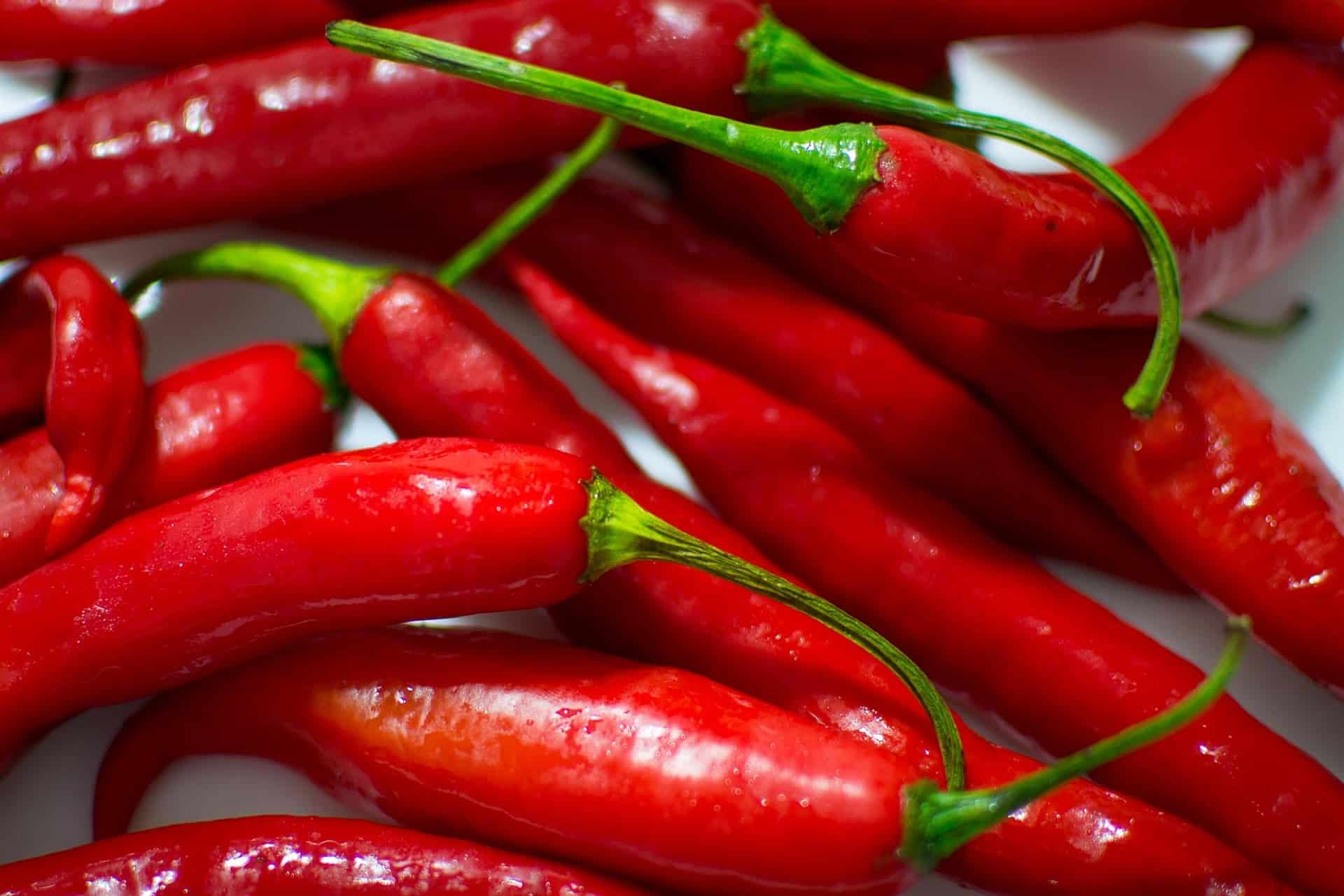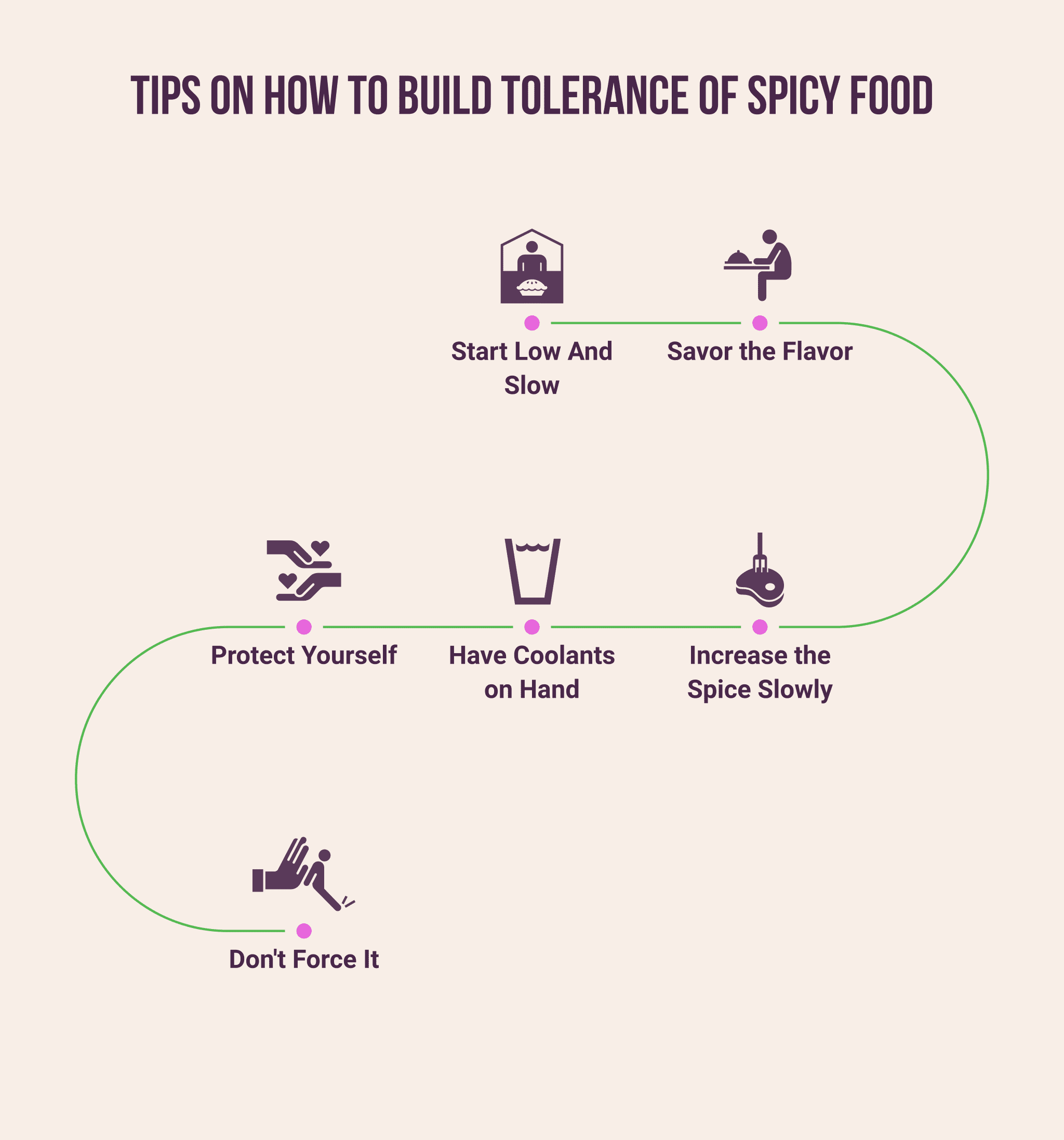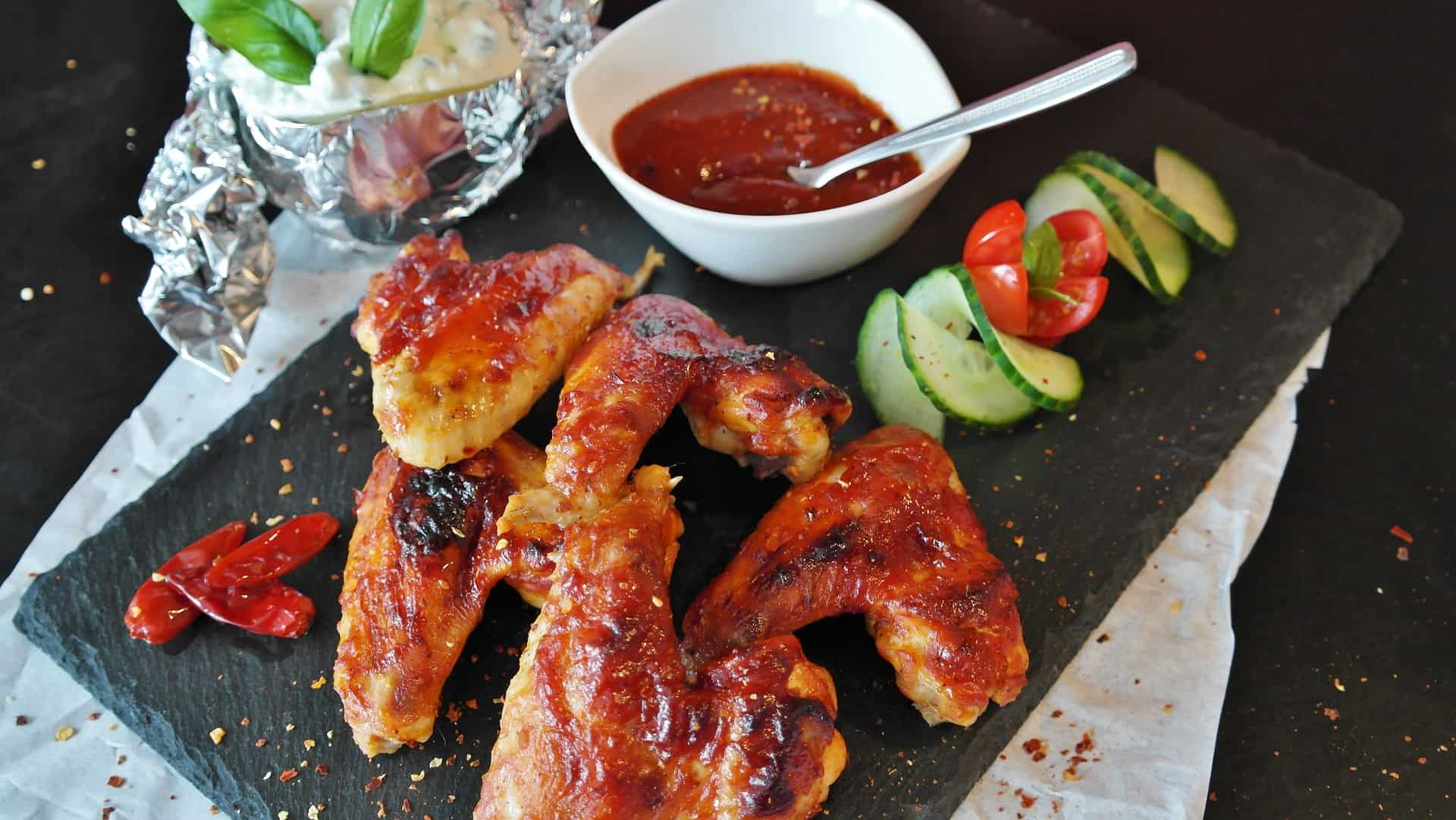
Are you looking for a way to enjoy spicy food without setting your mouth on fire? Do you find yourself sweating, gasping for air, and desperately reaching for a glass of water after each bite? Building tolerance to spicy food doesn’t have to be painful. If so, you’ve come to the right place!
Spicy food is defined as a food that contains capsaicin, which is the compound responsible for the heat in peppers. It’s commonly found in chili pepper, habaneros, jalapenos, and other spicy foods. Eating spicy foods can be an acquired taste.
Building tolerance to spicy food is an achievable goal. With some practice and patience, anyone can learn how to enjoy dishes with more heat.
This article will explore tips and tricks to help you develop a taste for spicier foods. So get ready – it’s time to add some kick to your meals!
Tips On How To Build Tolerance Of Spicy Food

Eating spicy food that is too hot for your palate is uncomfortable. You don’t want to eat something that makes your mouth feel like it’s on fire. But fear not! With a few simple steps, you can enjoy mildly spicy dishes and eventually work your way up to more flavorful fare.
Here are some tips to help you become a fan of spicier foods:
🌶Start Low And Slow
“Start low and slow” is the best approach to building spicy food tolerance. It’s important to begin with, dishes that are only mildly spicy gradually increase the heat as your taste buds become accustomed to the flavor.
Start by eating dishes containing ingredients such as bell peppers, paprika, or cayenne pepper with mild heat. As you become more comfortable with spicier food, try adding a little bit of chili powder, jalapeno, or other hotter peppers.
When looking for recipes, avoid those that list habanero or Scotch Bonnet peppers as ingredients. These are too hot for most people just starting out with building their spice tolerance. It’s best to take it slow and work your way up from there.
It’s also important to recognize how much spice is enough for you. Everyone has different thresholds for what they can handle, so don’t overdo it! If a dish is too spicy for you, add more dairy, like yogurt or sour cream, to help mellow out the flavors. This will cool down the heat while still allowing you to experience the dish’s spices without overwhelming it.
🌶 Savor the Flavor

“Savor the Flavor” is an important step when building tolerance to spicy food. Not only should you start low and slow, but it’s also important to appreciate the flavor of spicier dishes. When you savor your food, you are more likely to enjoy it instead of being overwhelmed by the heat.
Take small bites and chew slowly when trying a dish for the first time. Allow yourself to taste the different ingredients and flavors that combine together to make the dish unique. This process will help you acquire a better palate for spicy foods.
It’s essential to take your time with your meal, too. Eating too quickly can cause you to miss out on subtle nuances in flavor that you would otherwise enjoy with each bite. Taking your time will also help build tolerance because you won’t be gulping down large quantities of spicy food all at once, which can lead to feeling overwhelmed or uncomfortable.
🌶 Increase the Spice Slowly
Next, slowly increase your food’s spice levels slowly as you build tolerance. Don’t start off by going from mild to hot overnight! Instead, add a bit of heat with each meal and work up from there. Doing so will help you develop a taste for spicier foods without overwhelming your palate.
You can also try experimenting with different types of spices and peppers. Sample dishes from various cuisines to get a feel for the flavors from around the globe. This will help you understand what ingredients pair well together and how much spice is too much for your palate.
🌶 Have Coolants on Hand
A major part of building tolerance is having coolants on hand to help ease the heat when it gets too intense. Keeping drinks like water, cold milk, beer, and even smoothies is essential for those who are new to spicy food.
You can also try yogurt-based condiments, like tzatziki or raita, which are perfect to pair with spicier dishes. Not only will they cool down your palate, but they will also provide a nice balance to the flavors in your meal.
Remember that mastering spice is a gradual process, and as long as you have coolants nearby, you should feel confident enough to start your journey into fiery pleasure!
🌶 Protect Yourself
When handling spicy foods, protect yourself from potential burns. Some of the most common ways to do this are to wear gloves or an apron and make sure to wash your hands thoroughly after touching any spices or peppers. It’s also crucial to avoid touching your face or eyes while preparing spicy dishes. Doing so can result in a lot of discomfort and pain.
🌶 Don’t Force It
Finally, remember that you don’t have to force yourself to eat something if you’re uncomfortable with it. Pushing yourself too hard can actually lead to an aversion to spicy food, which is the last thing we want!
Take baby steps and only increase your spice tolerance when you feel ready. If a dish is too much for you, feel free to take a break or ask for something milder. You should never feel embarrassed or ashamed when it comes to your food preferences.
The Health Benefits of Spicy Food

Spicy food isn’t just a delicious treat; it can also provide numerous health benefits.
Spicy foods tend to divide people more strongly than any other. Which salsa do you prefer: mild, medium, or three-alarm hot? Those who enjoy spicy foods (and not only those derived from chili peppers) have science on their side. The health advantages of spices, including cinnamon, turmeric, ginger, garlic, cumin, and chile, are well-documented.
Here are some of the most impressive benefits of eating spicy food:
🥘 Speeds Up Metabolism
Eating spicy meal can help to speed up your metabolism, allowing your body to burn more calories and aiding in weight loss. This is due to the presence of capsaicin, a compound found in many chili peppers that have been shown to increase the rate of calorie burning and suppress hunger. In addition, capsaicin also helps reduce fat deposits throughout the body.
🥘 Reduces Inflammation
Studies have shown that spices can help reduce inflammation in the body, which is beneficial for those with chronic illnesses or joint pain. This is because many hot peppers contain compounds such as capsaicin and quercetin, which have anti-inflammatory properties. Additionally, some spices like turmeric and ginger contain antioxidants that can also help reduce inflammation.
🥘 Boosts Immunity
Spicy foods are also known for boosting immunity. Not only does eating spicy food make you sweat, which helps release toxins from the body, but many spices have antibacterial properties that can help prevent infections. Plus, some of these spices contain vitamins and minerals that can help boost immunity.
🥘 Spices Help Kill Bacteria
Spices have been used for centuries in traditional cooking for both flavor and potential medicinal benefits. Recent studies have now demonstrated that certain spices have the power to kill bacteria—especially the hardier strains that are becoming resistant to many antibiotics.
Allspice, oregano, clove, cinnamon, tarragon, thyme, garlic, and bay leaf are just several of the spices known to be high in compounds with antibiotic properties. However, incorporating a variety of these spices into your diet is better for reaping maximum health benefits due to their increased synergistic power.
Despite this potential risk of bacterial overgrowth, it’s important to remember that spices are a seasoning addition only; they should not replace patented medicines or medical treatment.
🥘 A Longer Life
In addition to improving your food’s flavor, many spices may help increase your lifespan. More than half a million Chinese adults had their diets and life expectancy examined in a research published in 2015. The death rate was 14 percent lower among participants who ate spicy foods six or seven times a day, especially those who ingested fresh and dried chili peppers.
(The mortality rate dropped by 10% among those who consumed spicy dishes once per week.) Once more, we can thank capsaicin, the primary ingredient in chili peppers, for this success.
🥘 Weight Loss
Eating spicy food is one of the most popular weight-loss strategies. Its effects are well documented, with studies showing that eating spicy foods can cause you to burn more calories than usual and increase your body’s metabolic rate, helping you shed those extra pounds.
Plus, a spicy dish can be a great weight-loss asset in any healthy diet because it adds flavor to otherwise bland meals and doesn’t add additional calories. Best of all, adding any amount of spice to your meals will do the trick – it doesn’t require a lot to get the results! You’ll be reaping the rewards of this delicious diet hack in no time.
🥘 A Healthier Heart
Have you ever wondered why your grandmother swears for hot food? It may be because it’s good for her heart. Eating spicy foods has been linked to a reduced risk of heart disease.
For one, the capsaicin found in chili peppers has been associated with healthy metabolic functioning by decreasing cholesterol and triglyceride levels. Spicy foods are also beneficial in controlling blood pressure and reducing inflammation throughout the body.
Further, some species of capsicum peppers contain chemicals that can reduce pain while strengthening heart muscle fibers. Finally, adding spice to your meals increases satiety, which means you’ll eat smaller portions and consume fewer calories overall – thus helping maintain a healthy weight that is necessary for a strong heart.
Frequently Asked Questions
Q: Can I use hot sauce to help build a tolerance to spicy food?
A: Yes! Hot sauce can be a great way to increase your tolerance of spicy food, as it generally contains capsaicin (the active ingredient in chili peppers) and other spices that can help you develop a higher threshold for heat. However, you should start slowly and gradually increase the amount of hot sauce in your dishes to build your tolerance.
Q: Is spicy food bad for me?
A: Generally, no. Spicy food is beneficial for health and weight loss as long as you consume the right spices. As with anything else, too much of a good thing can be detrimental, so always practice moderation when adding spice to your meals.
Q: What should I do if a burning sensation occurs after eating spicy food?
A: If a burning sensation occurs, you can try drinking milk or consuming dairy products to soothe the burning. Dairy has fats that help coat the mouth and reduce the effect of capsaicin. Furthermore, you can try drinking cold water or eating something sweet (such as fruit) to cool your tongue down.
Q: What is the difference between red pepper and black pepper?
A: Red pepper is made from dried red chili peppers, while black pepper is derived from plucked and dried peppercorns. Red pepper has a much spicier taste than black pepper, and its active ingredient (capsaicin) can help aid in weight loss and other health benefits. Black pepper has a more subtle flavor and is known for its digestive benefits. Ultimately, both spices can bring great flavor and health benefits to your dishes – so be sure to experiment with various peppers!
Q: Which recipe should spicy food lovers try first?
A: If you’re new to the world of spicy foods, a great way to start is with something simple like an Indian-style vegetable curry. You can also try adding some red pepper flakes or cayenne pepper to your favorite dishes for a flavorful kick! Alternatively, if you’d like to make something a bit heartier, you can make chili with ground beef, kidney beans, and a variety of spices. This is sure to satisfy any spicy food lover’s cravings!
Final Words
In conclusion, adding spice to your meals can be a great way to reap the health benefits of capsaicin and other spices. Whether you’re looking for something simple or more complex, there are plenty of recipes out there that will suit any spicy food lover’s palate.
With regular consumption, you may even build up an increased tolerance to hot foods over time! Make sure to start slow and increase the heat gradually as you go – it could make all the difference in your overall experience with spicier dishes. Bon appetit!
